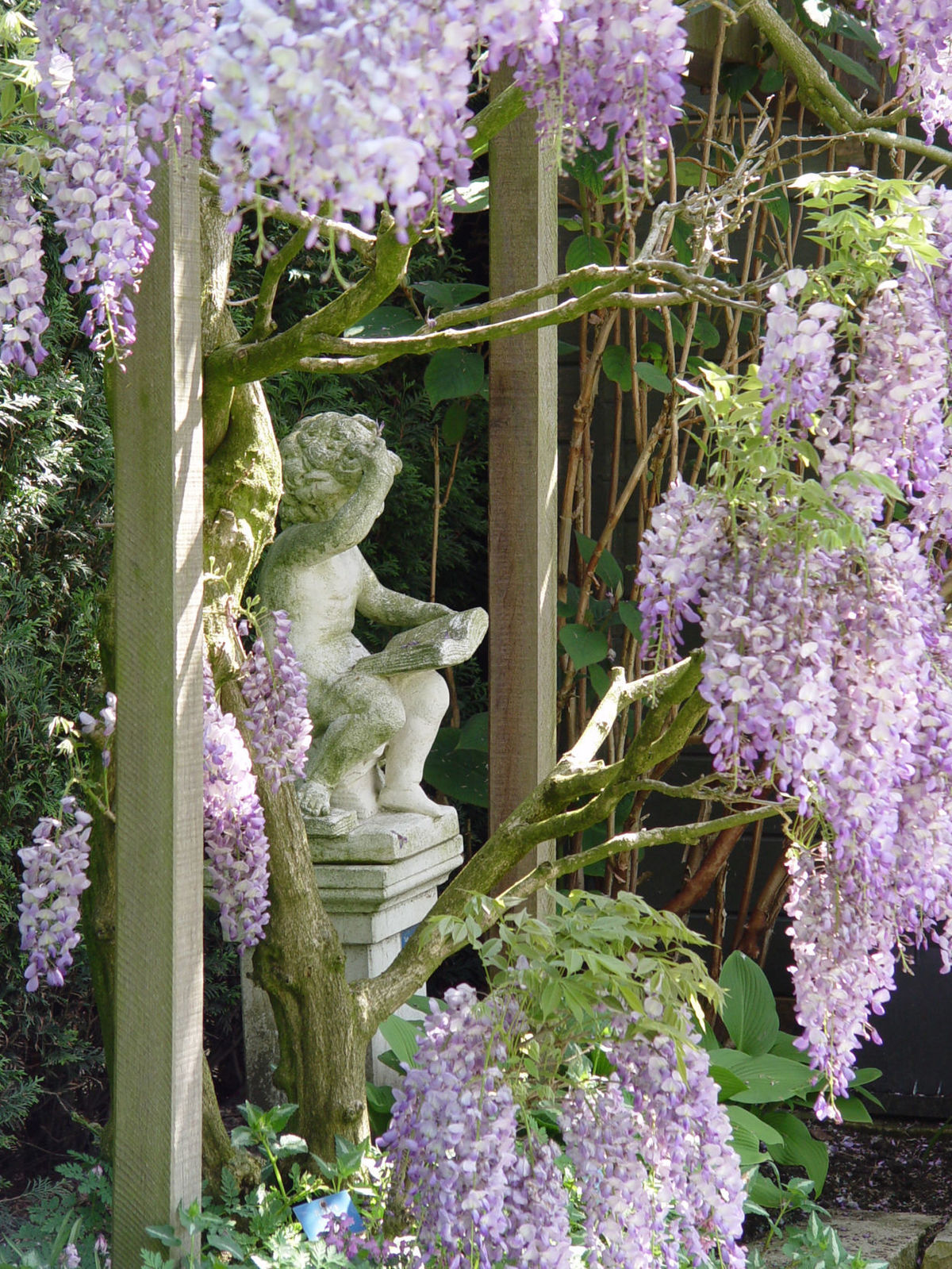
When the Far East gave the West her first wisteria vines, they tricked us out of our flowers. Plant hunters were given seeds of Wisteria sinensis, not plants, to take back home to France and England.
The sharers failed to explain these incredible vines share a wide variation in flowering age. Most flower from 8 to 12 years after germination. Others, however, can take up to 20 years to make their first flowers. This is why there is such disappointment with these vines when their origin is questionable. You may not be willing to wait two decades for flowers.
This is clearly a genetic problem caused by the serendipitous process of sexual reproduction by seed. There can be a wide range of bloom age, color intensity, overall raceme size and cold hardiness.
Later on the plant hunters finally entered Japan in the early 18th century and obtained layered cuttings of Wisteria floribunda. It’s interesting to note this species twines from right to left, while W. sinensis twines left to right.
Japanese wisteria is less rangy, bearing fewer but sometimes much larger racemes, or flowering stalks, with exquisite blossoms. This species was heavily selected long ago in Japan for the most productive seedlings. The result is white flowers and some with incredible racemes up to seven feet long! These are national treasures in ancient traditional gardens. In 1920, one writer described a Japanese wisteria said to be a thousand years old was documented with a trunk of 32 feet around. This demonstrates how early some of the Japanese plants were selected and propagated and venerated in their gardens.
All over America though, seedling wisterias continued to refuse to bloom. It led to an amazing array of tortures to make reluctant wisterias bloom. They were designed to stress the plants, which forces them to bloom to reproduce before they die.
According to one English author, recommended treatments include “severe root pruning, girdling the trunk, withholding fertilizer, severe pruning and other manner of intimidating the plant.” Clearly these can also kill the wisteria, which may have been desirable outcome for a plant that refuses to produce its most desirable characteristic.
When you purchase a wisteria, be sure to consult an expert if you’re not plant-savvy. Look for plants that are a named variety, such as Wisteria sinensis ‘Texas Purple’. This old favorite is well proven for rural home sites, particularly in the arid West and South. Wisteria is hardy to Zone 5 with some exceptions.
Wisteria can engulf a house if not properly cared for. In open rural home sites, that vast scale is a desirable characteristic. It was popular for cloaking a dead tree in English gardens. This is also a stunning choice for covering American shade arbors so the racemes hang in an incredible display underneath before leafing out in spring.
In the city, a vine like wisteria can be structurally devastating. Very fine tendrils hunt slots in the architecture to enter and anchor as the vine reaches up to the sun. These penetrations grow larger in diameter each year until they become wood and are impossible to remove. They have routinely invaded attics to lift roofs off old structures. Once established they can be difficult to remove from tight spaces and wild lands if they escape when conditions are just right.
Wisteria remains the most photographed plant in the world when it blooms. Nothing is so dramatic for bringing foliage and flowers far from the stem. In the 19th century, outdoor spaces could be shaded with these beautiful vines so corseted women could go outdoors in the summer time.
Today their vigorous growth causes much trepidation while the decidedly amazing bloom remains unsurpassed. Thus gardeners continue to plant seedlings that cause the very same problems without the payoff of flowers. Like all things great and powerful, education is essential for choosing the right individual that’s guaranteed ensure maximum benefit within your lifetime without risk.
[“Source-fredericksburg”]
